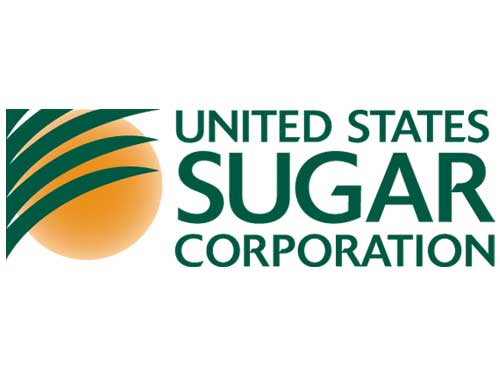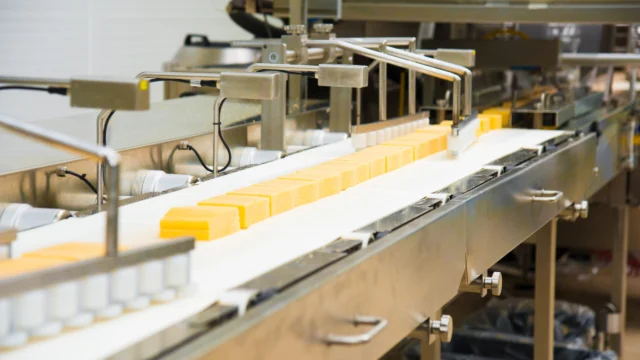United States Sugar Corporation Improves its Operating Margin With Reliability Excellence
solutions
sectors

The Situation
The United States Sugar Corporation (USSC) is located in Clewiston, Florida on the southern shore of Lake Okeechobee. The company is primarily owned by its 1700 employees. The Southern Sugar Company opened the Clewiston Sugar House in 1929 at a production rate of 1,500 tons of cane per day. Since being purchased in 1931 and becoming USSC, the company has continuously improved and upgraded its facilities, including a new raw sugar factory located at Canal Point, Florida in 1965 and a new refinery in 1998, supported by 187,000 acres of company owned cane farm to supply raw materials. The company recently completed a large consolidation and expansion exercise that will ultimately increase cane grinding capacity to 38,000 tons per day at the Clewiston facility. In parallel with this expansion at Clewiston, the Canal Point facility was shut down and sold off in April 2007. The Clewiston facility is now the largest integrated sugar cane processing and refining facility in the world.
US Sugar initially requested Life Cycle Engineering to provide an assessment of their maintenance planning and scheduling efforts. During this assessment, leadership realized that the scope of the assessment should be across the entire operation, rather than simply in the area of planning and scheduling. A full Reliability Excellence assessment was conducted in September 2006, which revealed several areas where significant improvement could be made to improve sugar production, reduce waste, and reduce R&M costs.
The Challenges
US Sugar was faced with significant challenges resulting from the shutdown of an older mill and transferring that capacity to the newer and larger mill, which was under expansion. They recognized that immediate and long-term changes were required to successfully manage this upgrade of their facilities, which were supported by the findings of the Reliability Excellence Assessment process.
Due to closing of the old mill, an organizational realignment was necessary. While this activity did not impact US Sugar’s plan to improve overall performance, it was identified as a distraction for a short time.
The organization was involved in implementation of a new company-wide EAM, which challenged the client to ensure all improvement efforts were compatible in form and function with the new system.
The Reliability Excellence Site Assessment also revealed many other issues and opportunities for improvement in the US Sugar Manufacturing Division:
- The site was highly reactive, with no documented work management processes or strategy in place.
- Maintenance Planners were in place but they were not fully dedicated to work planning nor educated in planning best practices. There were several good indications of resource utilization, area “planning and scheduling” meetings and work schedules, and standardization of work scheduling among the different areas.
- The technical skills of maintenance craft-persons were very basic. A comprehensive strategy to improve technical skills was needed.
- Manufacturing losses, both process and product, were excessive, with no established methodology identifying and determining root cause of these losses.
- Plant leadership had little exposure to Reliability Excellence or Change Management concepts, which perpetuated the reactive environment.
- There were no processes and very little control of MRO Materials Management in the site. Materials were stored in various authorized and unauthorized locations, indications of significant overstocking were evident, and there appeared to be a large amount of obsolete inventory around the site.
- The plant did not have a Reliability Engineer on site, and had no strategy for Reliability, chronic failure resolution, or root cause analysis of repetitive failures.
- Housekeeping practices were very poor in most production areas, and there was little awareness of the value gained by clean working conditions.
The Approach
Early in 2007, US Sugar engaged Life Cycle Engineering for implementation of their Reliability Excellence process. Based on the findings of the Reliability Excellence Site Assessment, a strategy was jointly developed to improve the overall performance of the sugar manufacturing operation. Focus Teams were created to improve methods of accomplishing tasks in Work Control, Reliability Engineering, Materials Management and Operator Care. Examples of the improvements made are:
- New and effective processes were developed to guide the organization through work identification, planning, and execution, with associated leading and lagging KPIs to measure effectiveness in using these processes.
- Maintenance Planners were trained in best practices in work planning and scheduling, then coached as their skills developed to be more effective in executing those duties. Planners were also relieved of all other collateral duties to allow their full focus on planning and scheduling.
- A comprehensive craft skills analysis was conducted to identify areas where additional training was needed. Vendors, in-house resources, and the local community college were involved in providing necessary training to boost craft skills and provide a capable work force to maintain and repair site assets.
- A comprehensive set of KPIs (metrics), including OEE, was implemented to allow measurement and analysis of daily plant operations. Leadership and employees were trained and coached in the data management and analysis of these metrics, and how to use these metrics to drive correct behaviors to improve production throughput and quality.
- Plant leaders were coached to modify their approach to a more proactive environment, with metrics driving daily activities throughout the plant operations.
- A comprehensive Materials Management strategy was developed and implemented with effective processes to improve overall MRO materials management activities. Overstock and obsolete materials were identified and removed from the site and inventory to reduce the carrying cost burden to the site. Unauthorized remote storage locations were dismantled, with a Central Storeroom and a few authorized and controlled remote storerooms implemented to gain control of all inventory movement.
- At the request of US Sugar, LCE placed a Reliability Engineer on site to focus on chronic asset problems and other “bad actor” assets while the company searched for Reliability Engineers to add to their staff. The LCE Reliability Engineer focused for several months on site power plant, bagasse conveying systems, boiler issues, boiling house failures, tandem shredder throughput improvement, juice tank/trough spill elimination, sugar dryer reliability issues, and decanter centrifuge motor bearing failure elimination.
- An aggressive plant cleanup and housekeeping program was implemented to eliminate indiscriminate dumping of materials around the plant. A continuous improvement strategy was implemented to sustain improvements in overall plant housekeeping.
The Results
The Reliability Excellence implementation in US Sugar has resulted in significant overall performance of the sugar processing facilities. The site is driven by metrics with OEE as the primary driver, and is proactive in all facets of the operation.
- Effective work planning and scheduling improved resource utilization to 100% and schedule compliance improved 75% in less than four months. PM compliance has improved to 99% in the same time period.
- New Reliability Engineers are applying Reliability Centered Maintenance (RCM) principles across the organization, systematically using Root Cause Analysis (RCA) principles to eliminate repetitive and major failures to improve overall reliability of plant assets.
- Capture and analysis of a broad spectrum of Key Performance Indicators (KPIs) provides information which drives smart business decisions in both maintenance and production areas.
- Integrated processes for Work Control, Materials Management and Reliability Engineering ensure smooth and effective identification, planning, execution, completion and follow-on analysis of all work accomplished in the facility.
- An aggressive Operator Care program has been implemented, ensuring that assets are given proper attention in housekeeping, minor adjustment, and early detection of potential problems. Visitors (OSHA, ISO, corporate executives) now comment on the significant improvements in housekeeping and overall plant appearance.
- The site is expected to increase revenues from sugar production by more than $3.7 MM in the next year.
- More than $500,000 has been saved through elimination of excess/overstock MRO inventory and associated carrying costs.
- Energy conservation and savings has allowed the site to sell more than $1 MM of excess power to the Florida power grid.
Conclusions
The significant results are largely due to the credit of US Sugar Leadership, which recognized very early in the engagement with LCE that a small-scale tactical approach to improvement would not solve the larger problems of overall plant reactivity and lack of focus on the right things to bring “step change” improvement to the sugar processing operation. Using the proven strategic implementation of Reliability Excellence on a site-wide basis has provided US Sugar with significant cultural change supported by significant overall plant performance. Coupled with similar success in the Reliability Excellence implementation in the Cane Operations Division, US Sugar is poised to remain the world’s largest sugar processing facility, with a much improved operating margin with which to sustain this level of operation.
© Life Cycle Engineering, Inc.
For More Information
843.744.7110 | info@LCE.com

